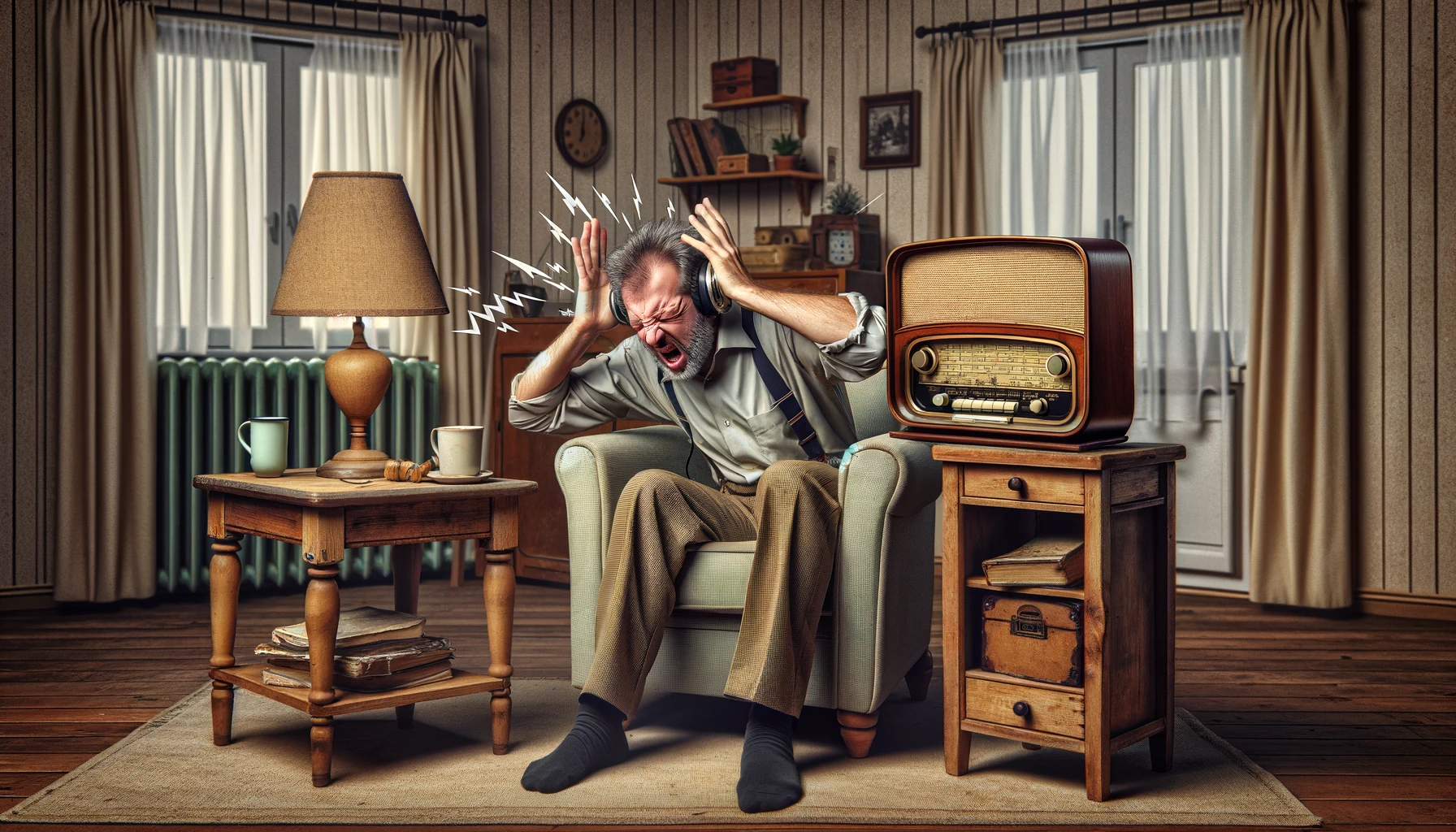Sound engineers with the best of intentions are breaking communication with the listener by designing the broadcast
The desire for a unity of broadcast elements, the urge to maximize the visualization of ideas in clips and live broadcasts compel sound producers of radio stations to experiment with noises. Is the use of unpleasant life sounds on the radio justified, and do they bring the listener closer to the radio station?
One might think that anyone working in modern commercial radio knows that alarming, unpleasant sounds are undesirable in radio broadcasting. There should be nothing on air that repels the listener from interacting with the station or might make them switch the program.
However, our observations of the Russian airwaves indicate that sound producers sometimes forget these basic truths. We tried to recall some instances of inappropriate sound use on air.
Phone ringing. Mobile phone vibration. One of the most common and truly annoying techniques in broadcast design. Especially if the sound in the receiver matches the ringtone of your own phone. The reason for the negative perception of these “harmless” sounds is obvious – they prompt unwanted action, provoke anxiety and deceive.
If a sound engineer achieves visualization in this way, they choose a wrong path. In the listener’s imagination, only their own phone appears, or a phone someone left near them. Then comes the search for the sound source and swift disappointment, because the radio station “played” them. While such a sound might help in radio dramas, it’s inappropriate for commercial radio broadcasting.
One has to ask sound producers who perform such “tricks” on the audience: Why did you put this sound on air? What should happen to the listener? Probably, the logic is to draw attention to the broadcast. A commendable goal, but!
Do you yourself not “twitch” when you hear a phone ring on the radio? Such a method of attracting attention might be chosen by someone who neither listens to the radio nor uses a mobile phone. Since almost everyone has a phone today, it seems the reason is a lack of analysis of one’s own work.
The sound of dialing on a phone keypad. Busy tones on the phone. These sounds are less distracting than a ringtone but can also irritate. The reason here is not manipulation of the listener, but a general association with phones.
An adult, working audience does not revel in excessive phone communication. For them, a phone is primarily a workday attribute, so associations with the “handset” usually remind them of work. But even about beloved work, one does not want to remember 24 hours a day.
Car sounds. Popular, but unfortunately, disorderly and incorrect use of car sounds stresses drivers: nervous door slamming, car accidents, screeching brakes, the sound of an overtaking car, etc. If you’re a driver, you know the drill. It really disrupts the driving rhythm. Up to causing accidents. Is it really necessary to fill the automotive section or traffic jam information with this sound junk? Revenge on car enthusiasts or compensation for the lack of personal transport?
It would never occur to discuss such banal things if we hadn’t heard distracting and manipulative sounds in the metropolitan airwaves with our own ears.
To those who love experiments, we remind that irritating sounds cause a much greater surge of emotional activity than pleasing sounds. This is scientifically proven. That’s why unpleasant sounds are perceived more vividly than familiar and even desired ones. How do you react to the sound of your neighbor’s drill at midnight?
Let’s recall some sounds that ordinary people probably wouldn’t want to hear on the radio:
Drill. Explosion. Fork on glass. Baby crying. Disc grinder. Microphone feedback. Water dripping from a tap. Car horns in a traffic jam. Ruler on a bottle. Chalk on a blackboard. Dissonant violin. Nails on a board. Knife on a bottle. Jackhammer. Mosquito buzzing. Crying and sobbing. Kettle whistle. Siren. Emergency signals. Door creaking. Swing creaking. Rubbing styrofoam. Electric drill. Electronic alarm clock.
We won’t deny that there can be exceptions in any work, and the use of a particular unpleasant or alarming sound depends on the context. Sometimes there are real creative successes.
But more often than not, it’s more beneficial to focus on sounds that evoke comfortable broadcast associations in the listener, rather than achieving victory through paradox.
By the way, pleasant sounds to the human ear should also be listed:
Applause. Gurgling in a bottle’s neck. Thunder. Baby babble. The babble of a brook. The sound of winning at slot machines. The sound of a summer field. Sounds of love passion. A lullaby. Cat purring. Birds singing. Turning the pages of a book. The crackling of a fire. The sound of the surf. Popping a champagne cork. Champagne bubbles. Laughter. Rain hitting the roof. The crackling of logs in a fireplace. The crackle of cicadas. Fanfares. A fountain. The crunch of snow. The rustle of banknotes. The rustle of leaves. The sound of rain.
We understand that even among these sounds, there may be exceptions.
The main thing that will help a sound engineer not make a mistake in formatting the air and creating clips is understanding the listener’s desires, the mission of the radio station, and good taste.”


